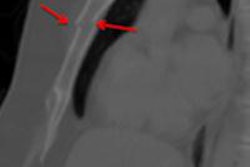Dear Advanced Visualization Insider,
There's a lot to consider when setting up or seeking to improve an existing 3D lab. Radiologists, of course, have particular requirements for 3D postprocessing, while clinicians have their own set of needs.
At the recent International Symposium on Multidetector-Row CT in Washington, DC, Laura Pierce, administrative director of the 3D lab at Duke University, shared some tips on how 3D labs can understand and implement the varying requirements of these two different customer types.
Part 1 of our coverage, which addresses radiologist postprocessing needs, is this newsletter's Insider Exclusive, which you can access before our other AuntMinnie.com members. Stay tuned for part 2, which will discuss 3D from the clinician's perspective.
In another presentation from MDCT 2013, Dr. Elliot Fishman shared his perspective on how the iPad has already affected the practice of radiology, along with what's on the horizon for the tablet computer. For our coverage, click here.
In other Advanced Visualization Digital Community news, researchers at Massachusetts General Hospital have been exploring the use of postmortem CT and a 3D touchscreen table for virtual autopsies. Dr. Sarvenaz Pourjabbar described the benefits of the technique in an article you can view here.
In other news, sagittal reconstructions on chest MDCT studies were found to be useful for identifying sternal injuries.
Meanwhile, color images can pose technical challenges for image management, and a group of experts recently convened in Washington, DC, to discuss potential issues and solutions. Contributing writer Dr. David Clunie shared his wrapup from the meeting.
Computer-aided detection (CAD) technology was found to be invaluable for detecting and treating craniosynostosis, or premature fusion of skull sutures in infants. But CAD turned in mixed results in breast MRI, with improved sensitivity but no significant upgrade in overall accuracy.
Finally, 4D musculoskeletal CT may shed some new light on how bones interact during joint movement, according to Australian researchers.
Do you have any interesting images or clips that might be suitable for our AV Gallery? You are welcome to submit them here.



















